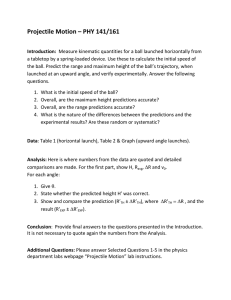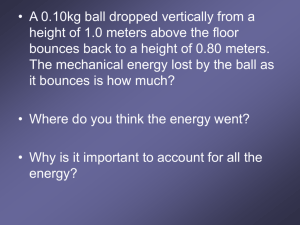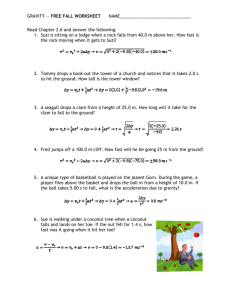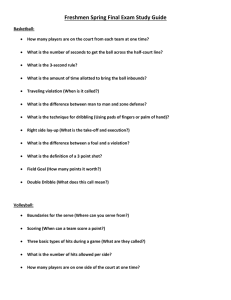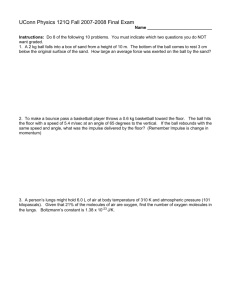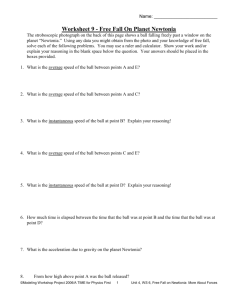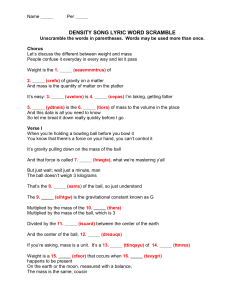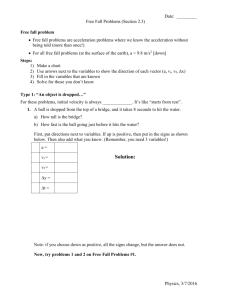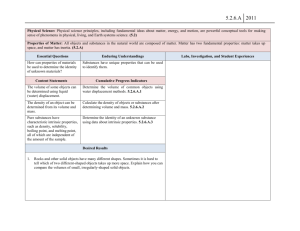bouncingball
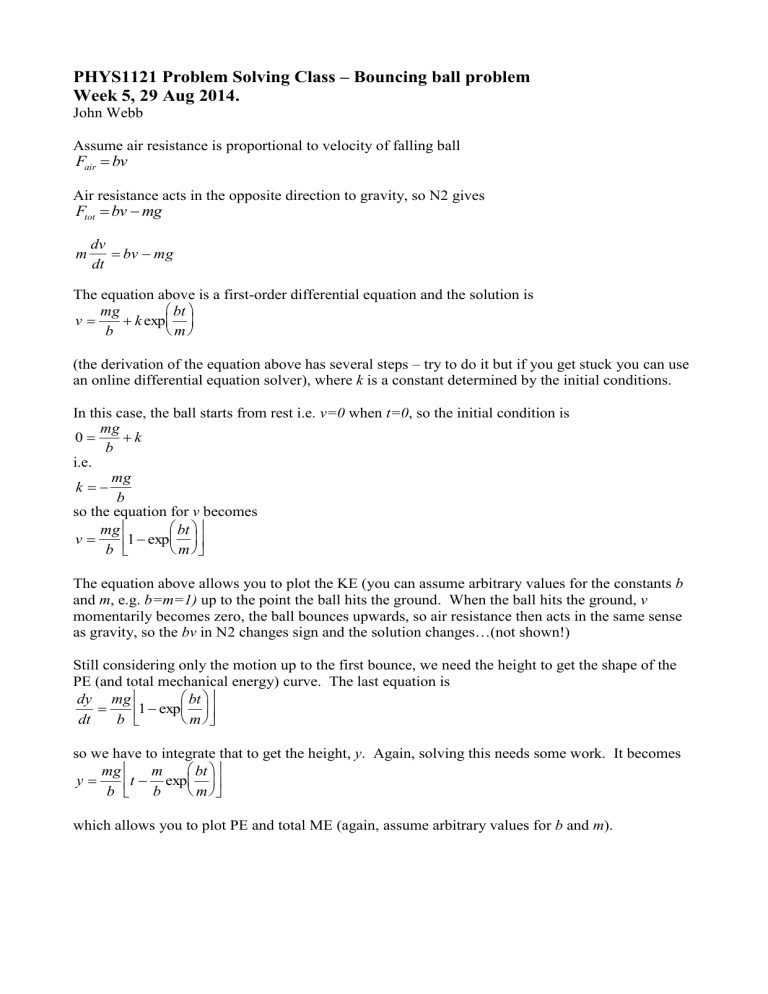
PHYS1121 Problem Solving Class – Bouncing ball problem
Week 5, 29 Aug 2014.
John Webb
Assume air resistance is proportional to velocity of falling ball
F air
bv
Air resistance acts in the opposite direction to gravity, so N2 gives
F tot
bv
mg dv m
bv
mg dt
The equation above is a first-order differential equation and the solution is v
mg
bt b
k exp
m
(the derivation of the equation above has several steps – try to do it but if you get stuck you can use an online differential equation solver), where k is a constant determined by the initial conditions.
In this case, the ball starts from rest i.e. v=0 when t=0 , so the initial condition is
0
mg b
k i.e. k
mg b so the equation for v becomes v
mg
1
exp
bt b
m
The equation above allows you to plot the KE (you can assume arbitrary values for the constants b and m , e.g. b=m=1) up to the point the ball hits the ground. When the ball hits the ground, v momentarily becomes zero, the ball bounces upwards, so air resistance then acts in the same sense as gravity, so the bv in N2 changes sign and the solution changes…(not shown!)
Still considering only the motion up to the first bounce, we need the height to get the shape of the
PE (and total mechanical energy) curve. The last equation is dy dt
mg b
1
exp
bt m
so we have to integrate that to get the height, y . Again, solving this needs some work. It becomes y
mg b
t
m b exp
bt m
which allows you to plot PE and total ME (again, assume arbitrary values for b and m ).


